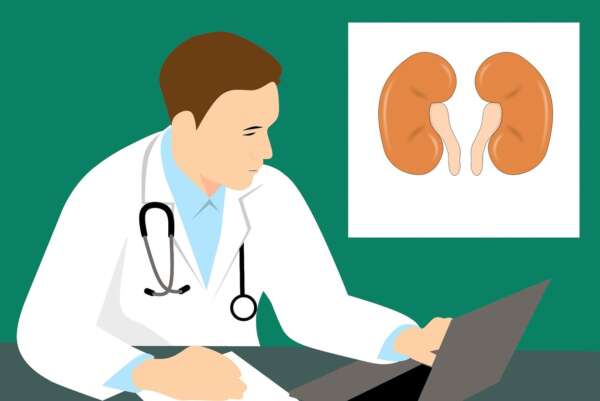Introduction
Regular exercise is a cornerstone of overall health, but did you know it can play a significant role in maintaining kidney health and prostate health as well? Exercise has a profound impact on many aspects of the body, including the vital organs responsible for filtration and reproduction. This blog will explore the benefits of regular exercise for kidney and prostate health, highlighting specific activities that promote these areas of wellness. Whether you’re managing an existing condition or aiming to prevent future issues, incorporating physical activity into your daily routine can be a game-changer.
The Benefits of Regular Exercise for Kidney and Prostate Health
Both the kidneys and the prostate are integral to our overall health, and maintaining them requires more than just medical intervention—it requires proactive lifestyle choices. Exercise for kidney health and exercise for prostate health offer multiple benefits, from enhancing organ function to preventing disease.
1. How Exercise Improves Kidney Function
Physical activity is particularly beneficial for kidney health. It improves circulation, reduces inflammation, and can help control the underlying causes of kidney disease, such as high blood pressure and diabetes.
How exercise helps:
- Regulates blood pressure: High blood pressure is a leading cause of kidney disease. Exercise helps to naturally lower blood pressure, reducing the strain on your kidneys.
- Improves circulation: Regular physical activity boosts blood flow to all organs, including the kidneys, helping them filter waste more efficiently.
- Manages blood sugar: For those with diabetes, exercise helps to regulate blood sugar levels, preventing kidney damage due to uncontrolled glucose levels.
Even moderate physical activity, such as walking or swimming, can significantly reduce the risk of kidney disease and improve kidney function in those who already have conditions like chronic kidney disease (CKD).
2. Exercises for Prostate Problems
The prostate is crucial for male reproductive health, but prostate issues, including enlargement and cancer, become more common with age. Engaging in regular physical activity has been shown to improve prostate health, helping to manage and even prevent certain prostate conditions.
How exercise benefits the prostate:
- Reduces prostate inflammation: Exercise helps reduce inflammation and oxidative stress, which can lead to prostate enlargement and other problems.
- Improves hormone balance: Certain forms of exercise, especially strength training, help regulate hormones like testosterone, which are critical in managing prostate health.
- Increases circulation: As with kidney health, exercise improves blood flow, delivering oxygen and nutrients that promote healthy prostate function.
3. The Best Exercises for Kidney and Prostate Health
Not all forms of exercise are equal when it comes to kidney health and prostate health. Incorporating a combination of aerobic, strength, and flexibility exercises can offer the most benefits.
1. Aerobic exercise
Aerobic exercises like walking, cycling, swimming, and jogging are excellent for improving cardiovascular health, which directly impacts both kidney and prostate function. These activities increase heart rate, improve circulation, and help maintain a healthy weight—all key factors in preventing kidney and prostate problems.
2. Strength training
Lifting weights or engaging in bodyweight exercises (like squats and lunges) can help build muscle and regulate hormones, particularly in relation to prostate wellness. Strength training also helps maintain a healthy metabolism and supports overall physical function.
3. Flexibility exercises
Incorporating stretches or yoga into your routine can improve flexibility, reduce tension, and support overall organ health. Yoga, in particular, is known for reducing stress, which can be beneficial for prostate and kidney health.
4. Physical Activity and Prostate Wellness
Exercise can reduce the risk of prostate cancer and improve outcomes for those undergoing treatment. Studies show that men who engage in regular physical activity have a lower risk of developing prostate cancer and may experience fewer side effects from treatment.
Additionally, exercise can help men with prostate problems such as benign prostatic hyperplasia (BPH). It can help reduce symptoms like urinary frequency and improve bladder control by strengthening pelvic muscles.
5. Lifestyle Tips for Kidney and Prostate Health
In addition to regular exercise, adopting a healthy lifestyle is critical for maintaining optimal kidney and prostate health. Here are some key tips:
- Stay hydrated: Proper hydration is essential for both kidneys and prostate health. Drink plenty of water throughout the day to ensure your kidneys can effectively filter waste and toxins.
- Eat a balanced diet: Focus on a diet rich in fruits, vegetables, lean proteins, and healthy fats. Limit sodium and sugar intake, both of which can stress the kidneys and increase the risk of prostate problems.
- Manage stress: Chronic stress can have a negative impact on both kidney and prostate health. Practise relaxation techniques such as meditation or deep breathing to reduce stress levels.
- Regular screenings: For those at higher risk, regular screenings for kidney disease and prostate issues are vital for early detection and intervention.
Conclusion
Incorporating regular exercise into your lifestyle can significantly improve kidney health and prostate health. From managing chronic conditions like diabetes and high blood pressure to reducing the risk of prostate problems and cancer, exercise is a powerful tool in maintaining well-being. Whether you’re aiming to prevent disease or improve function, making exercise for kidney health and exercise for prostate health a part of your daily routine will lead to long-term benefits.
Start small, stay consistent, and make physical activity a key part of your healthy lifestyle for kidney and prostate health.




